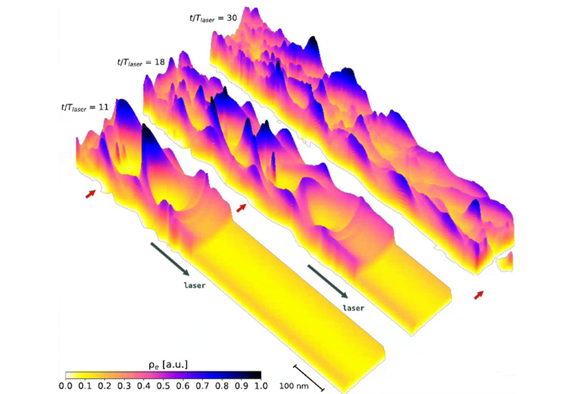LIV.DAT student participates in the NanoAc 2022 Workshop

LIV.DAT student Cristian Bontoiu participated in the NanoAc 2022 Workshop dedicated to Application of Nanostructures in the field of Accelerator Physics. Held at University of Valencia, Spain the event gathered together over 20 scientists who work within the area of novel acceleration methods using solid-state plasmas and intense lasers. The discussion was opened with an overview of the current conventional technologies used to deliver the highest energy and brightest beams in large-scale colliders such as the LHC and the planned CLIC.

Electron self-injection, acceleration and extraction in a an Carbon electron plasma with a transverse parabolic density profile. (Credit: QUASAR Group)
In the context of achieving ultra-high acceleration gradients, Cristian Bontoiu from LIV.DAT and the QUASAR Group presented numerical simulation results which prove that laser wakefield acceleration can benefit from TV/m longitudinal electric fields in a graphene target. Due to the high charge density of graphene, electrons can be self-injected and trapped in the wakefield bubbles created by intense UV laser pulses. Bunches of electrons with energies up to 10 MeV and a few pC charge, can be extracted from targets as short as a few μm.